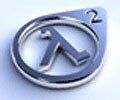Camshaft legend adds another two strokes to the internal combustion cycle

As a hot-rodding legend and inductee into the Drag Racing Hall of Fame, 75-year-old Bruce Crower has finally figured out a way to capture some of an internal combustion engine's wasted heat - a task he'd been trying to wrap his head around for three decades.
A typical four-stroke engine operates on the principle of intake, compression, combustion, and exhaust (or, if you prefer, suck-squeeze-bang-blow). After the conclusion of the exhaust cycle, significant amounts of heat remain in the cylinder. Like many other engineers, Crower ruminated on how best to capture the energy, instead of rejecting it to the cooling system as waste.
Crower's development injects water into the cylinder after the exhaust stroke. With both the intake and exhaust valves closed, the water flashes to steam and adds an additional power stroke to the combustion cycle (this is the "fifth" stroke). Upon venting the steam through the exhaust valve (the "sixth" stroke), the cycle starts over again.
The obvious advantage is improved efficiency - a claimed 40-percent, made possible by capturing some of that heat waste. In fact, it's claimed that the engine requires no cooling system whatsoever, and Crower's prototype supposedly is only warm to the touch after running for an hour. The cooling effect of the water could also dramatically improve detonation resistance, which would enable significantly increased compression ratios, potentially ending concern over carbon deposits in the combustion chamber.
Possible drawbacks include increased emissions, as shooting an air-fuel mixture into a cold cylinder will likely not help increase vaporization of the fuel (this concept might be begging for direct fuel injection). There's also a 33-percent decrease in "real" power cycles, which may result in less average torque at a given engine operating speed. All this injected water has to come from somewhere, which means additional weight and packaging volume (water and gasoline would be consumed at roughly the same rate). Finally, it's fair to question the effect of the injected water on engine life (H2O makes for a poor lubricant) and on catalytic converters.
It's far too early in this technology's development process to make a judgment on its effectiveness, but Crower has over a half-century of experience with internal combustion engines, and so we won't place any bets against his success.




 -Lytir1
-Lytir1








0 Comments:
Post a Comment
<< Home